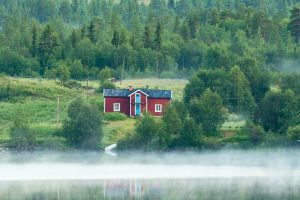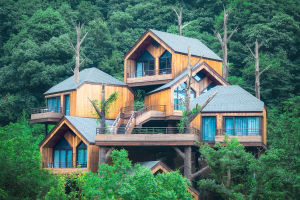Foggy Paradise
San Francisco, surrounded on three sides by water and influenced by the Pacific California Current, boasts a typical cool-summer Mediterranean-style climate.
Due to the long-term impact of sea breezes, the city experiences relatively mild summer temperatures, with daily highs usually hovering around 20 degrees Celsius (°C). It is a rarity for mercury to surpass 30°C, which only occurs about one week per year when strong land breezes prevail.
Consequently, September takes the crown as the warmest month in San Francisco.
The Pacific Ocean's water temperature remains consistent throughout the year, ranging between 10 and 15 degrees Celsius.
During summer nights, it can even dip below 10 degrees Celsius, providing an icy chill. San Francisco's proximity to the sea and the Golden Gate Strait renders it susceptible to fog formations, particularly during the late night and early morning hours.
However, rainfall is scarce in the summer months, with the rainy season spanning from January to April.
Situated on the western coast of the American continent in the northern hemisphere, the San Francisco area is under the alternating control of the westerly wind belt and the subtropical zone. Consequently, it falls into the Mediterranean climate type, characterized by a divergence between rain and heat.
Most rainfall occurs during winter, when the westerly zone dominates, while summers remain predominantly dry with minimal precipitation. The presence of surrounding mountains within the California cold-weather zone further contributes to the prevalence of fog in the San Francisco area, resulting in a phenomenon known as vertical climate change.
Although we often perceive California's Pacific Coast cities as consistently comfortable, devoid of severe winter cold or scorching summer heat, San Francisco challenges this notion. The city experiences cooler temperatures during summer, necessitating the use of heaters at night.
Additionally, the bone-chilling coldness of the water can leave one shivering. San Francisco Bay, nearly encircled by mountains, impedes the dissipation of sea fog.
This geographical feature, coupled with the city's close proximity to the ocean on three sides, exposes it to the regulating influence of the ocean currents.
As a result, the city is often enveloped in dense sea fog, and nighttime temperatures can drop to a mere 10 degrees. The convergence of cold and warm currents, such as the Alaskan warm currents and California cold currents, creates favorable conditions for the formation of sea fog.
The perpetual presence of sea fog has shaped the city's skyline, with relatively few high-rise buildings dotting the San Francisco landscape. Buildings taller than 10 stories exhibit humidity levels 7-12 times higher than ground-level structures.
In fact, the majority of buildings in the city consist of 2-3 stories, even in popular tourist areas like the "Nine Roads Bay." Thus, tourists seeking to witness the famous foggy ambiance of "Fog City" often choose to view it from the comfort of cable cars rather than climbing uphill.
Nevertheless, San Francisco remains a highly sought-after destination for tourists. The city boasts renowned universities renowned for their academic excellence, the iconic Golden Gate Bridge, the bustling technological hub of Silicon Valley, the vibrant Fisherman's Wharf, and the culturally rich and picturesque Lombard Street.
It is as if all the world's beauty converges in San Francisco, with each location exuding its unique allure. From the clear blue skies to the enchanting beaches and exquisite Victorian architecture, the city has earned its reputation as a globally recognized vacation paradise.
San Francisco also prides itself on being an open and tolerant metropolis, attracting people from diverse countries and cultures to settle in its midst.


